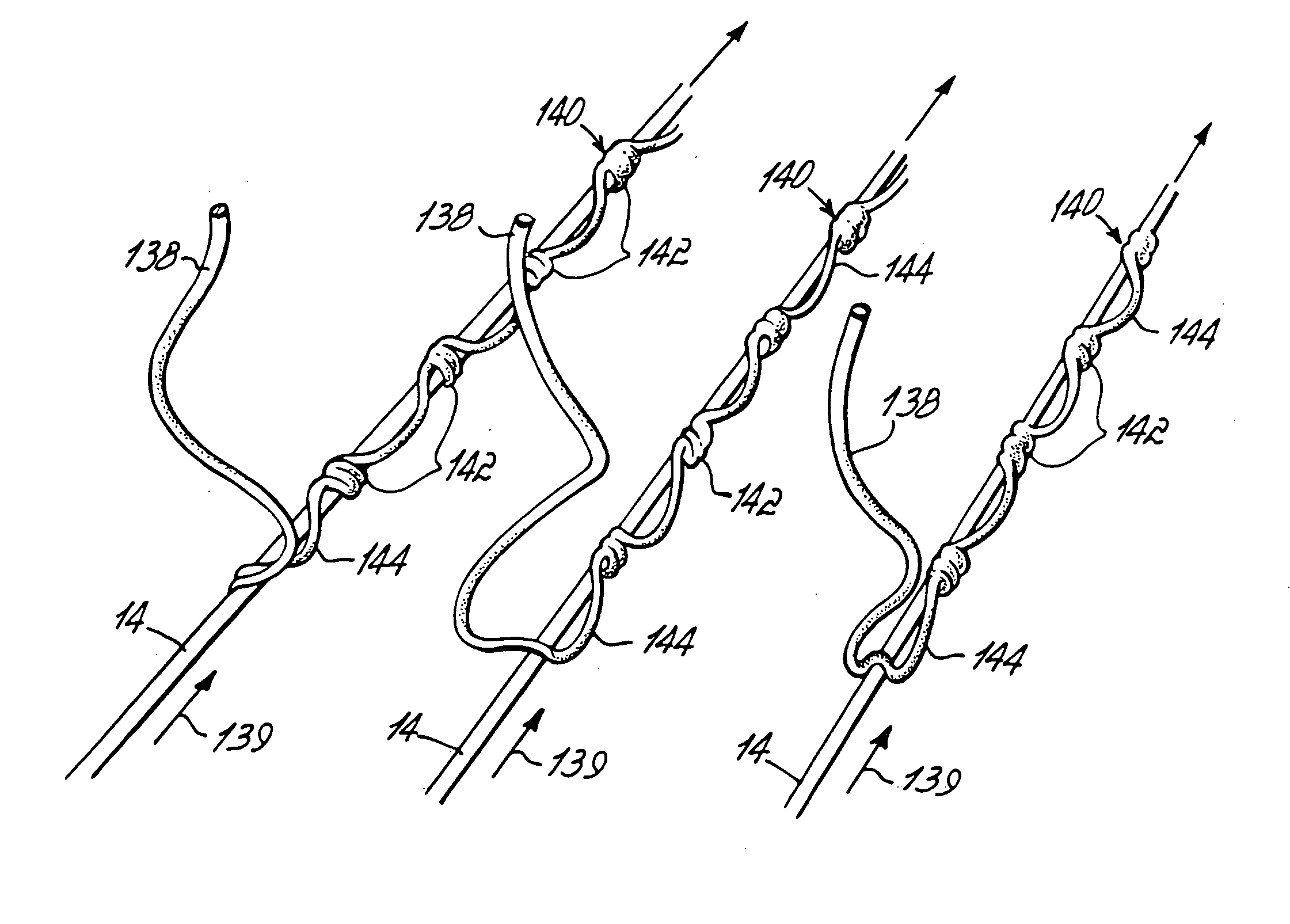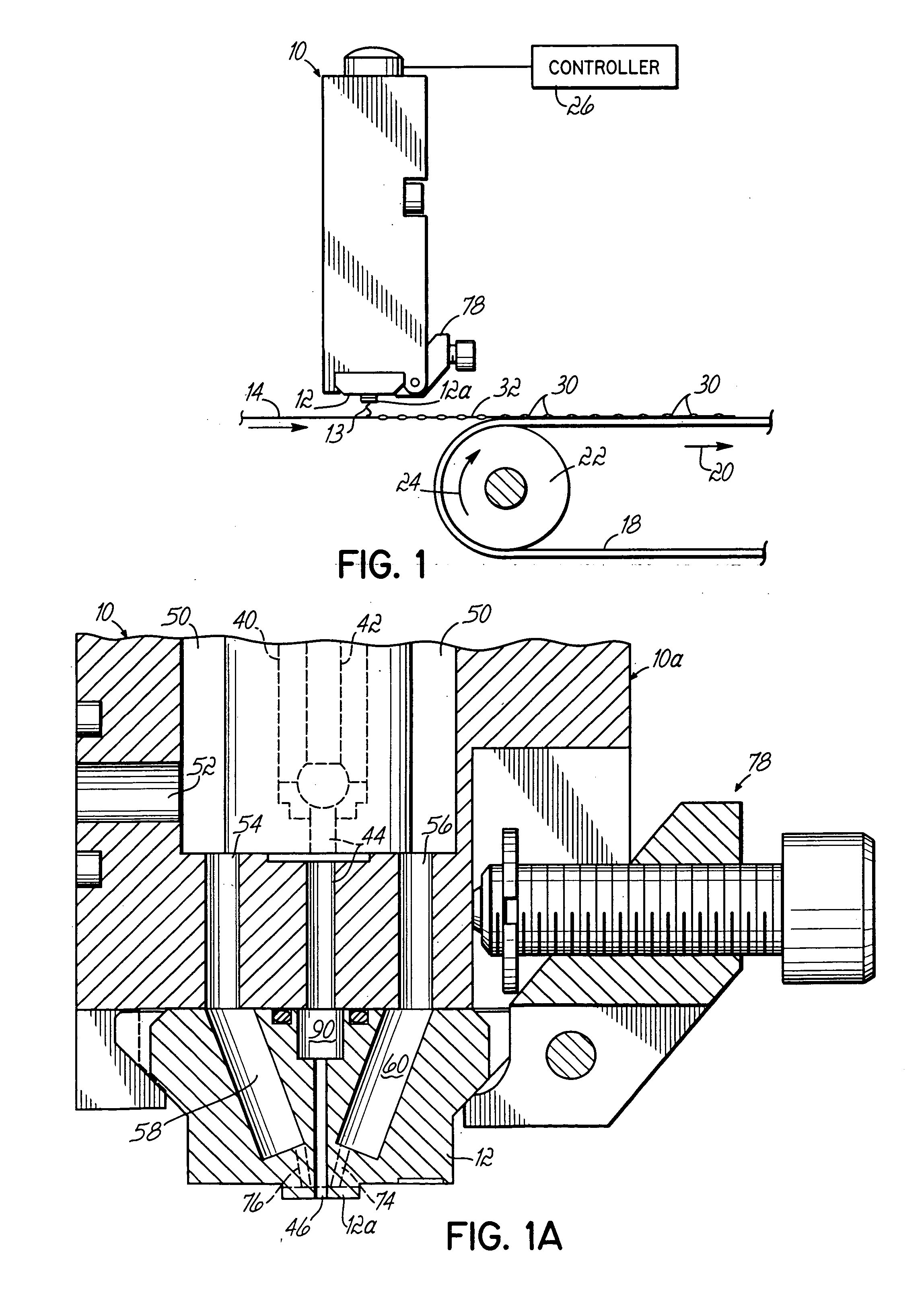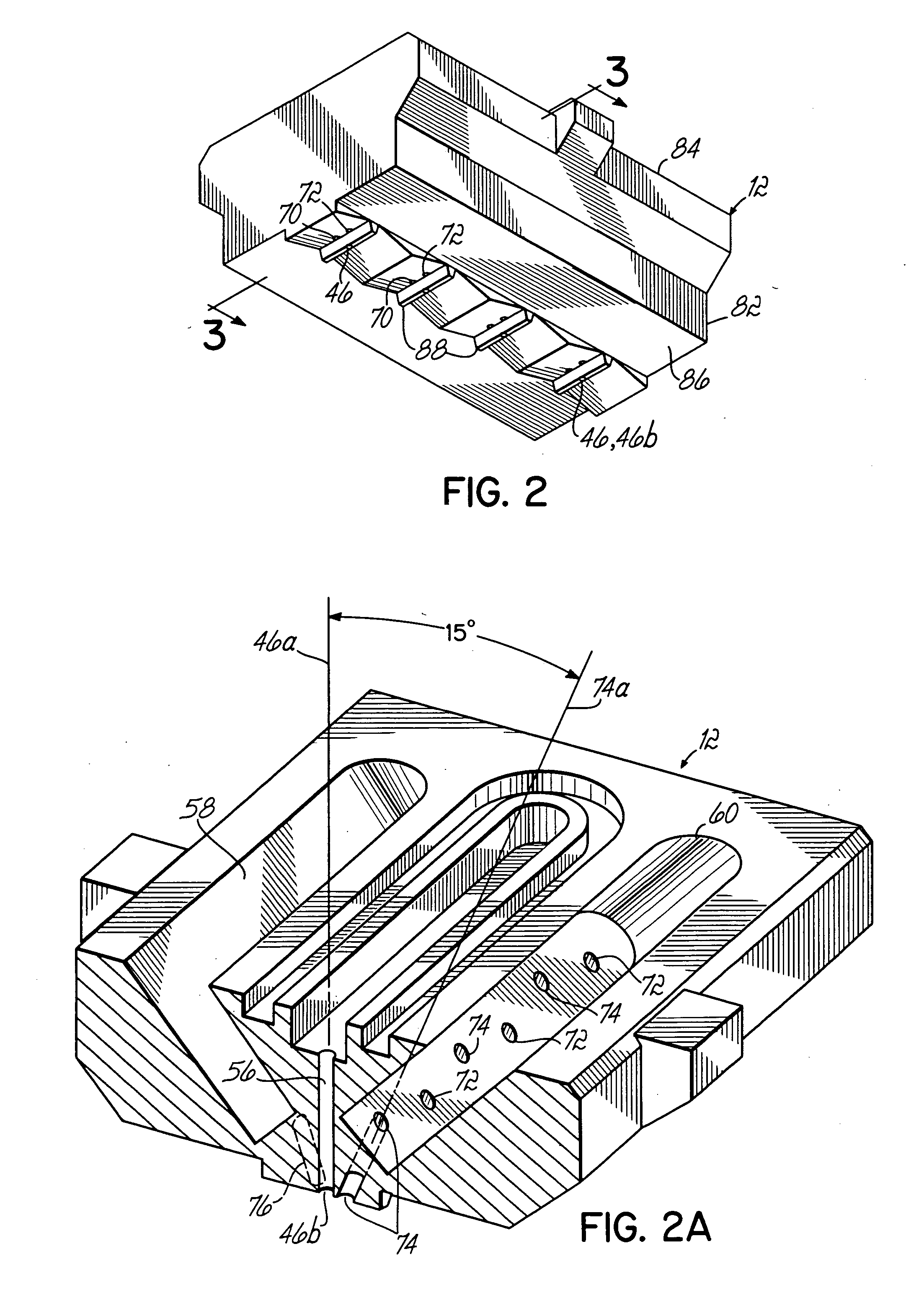Method of applying a continuous adhesive filament to an elastic strand with discrete bond points and articles manufactured by the method
a continuous adhesive and elastic strand technology, applied in the field of elastic strand securement, can solve the problems of reducing the elastic properties of the strand(s), unsatisfactory cost increase, and too much adhesive, and achieves high production speed, high bond strength, and superior process control.
- Summary
- Abstract
- Description
- Claims
- Application Information
AI Technical Summary
Benefits of technology
Problems solved by technology
Method used
Image
Examples
Embodiment Construction
[0031] For purposes of this description, words of direction such as “upward”, “vertical”, “horizontal”, “right”, “left” and the like are applied in conjunction with the drawings for purposes of clarity in the present description only. As is well known, liquid dispensing devices may be oriented in substantially any orientation, so these directional words should not be used to imply any particular absolute directions for an apparatus consistent with the invention.
[0032]FIG. 1 illustrates one embodiment of the method of this invention which uses an adhesive dispenser 10 including a nozzle 12. Nozzle 12 may include a circular adhesive discharge orifice, a more elongate slot-shaped orifice, or other types of orifices suitable for dispensing continuous adhesive filaments 13 of a desired width and with a pattern as discussed in greater detail below. In this embodiment, one or more stretched elastic Lycra strands 14 are moving in the direction of arrow 16 and a flat sheet 18 of substrate m...
PUM
| Property | Measurement | Unit |
|---|---|---|
| diameters | aaaaa | aaaaa |
| diameters | aaaaa | aaaaa |
| diameter | aaaaa | aaaaa |
Abstract
Description
Claims
Application Information
 Login to View More
Login to View More - R&D
- Intellectual Property
- Life Sciences
- Materials
- Tech Scout
- Unparalleled Data Quality
- Higher Quality Content
- 60% Fewer Hallucinations
Browse by: Latest US Patents, China's latest patents, Technical Efficacy Thesaurus, Application Domain, Technology Topic, Popular Technical Reports.
© 2025 PatSnap. All rights reserved.Legal|Privacy policy|Modern Slavery Act Transparency Statement|Sitemap|About US| Contact US: help@patsnap.com



